American extended tech tree for World of Tanks proposal by PikPikker and Zinoviy Alexeev  1942 Walter Christie’s Models
1942 Walter Christie’s Models
Christie Model 1919
J. Walter Christie débuta dans le développement de véhicules blindés, par des canons d’artillerie motorisés. En 1915-1916, Front Drive Motor Co obtena de la part de l’armée des USA un contrat pour un canon de 76 millimètres motorisé. Le véhicule réalisé était très lourd et sous-motorisé. D’ailleurs l’ affût était à peine satisfaisant. En 1917 Christie développera un obusier de 203 millimètres sur affût Mark VI qui fut commandée à 4 exemplaires. Ce modèle était le prototype de tous les réalisations de Christie. L’ engin pouvait se déplacer sur chenilless ou sur ses roues, une idée se récurante ensuite chez Christie, et atteindre les 26 km/h sur route. En Christie 1919 a obtenu la commande d’un char Un prototype fut développé, le Christie M1919. La suspension était trop lourde et trop rigide. Le Moteur de 6 cylindres, qui développait 120 cv n’était pas très puissant pour les 12 tonnes de l’engin et de celui-ci atteingnait avec la difficulté les 13 km/h sur route avec chenilles et 24 km/h sur ses roues.
J. Walter Christie began in the development of armoured vehicles, with artillery motorized guns. In 1915-1916, the Front Drive Motor Co, obtained from US Army a contract for a gun of 76 mm motorized. The vehicle developped was very heavy and under-was motorized. Moreover the mounting was hardly satisfactory. In 1917 Christie will develop an howitzer of 203 mm on mounting Mark VI which was ordered from 4 specimens. This model was the prototype of all the achievements of Christie. The machine could move either on tracks or on wheels, a recurring idea thereafter at Christie, and reach the 26 km/h on road. In 1919 Christie obtained the ordering of a tank. A prototype was developed, Christie M1919. The suspension was too heavy and too rigid. The engine of 6 cylinders, which developed 120 hp was not very powerful for the 12 tons of the machine and this one reached with difficulty the 13 km/h on road with the tracks and 24 km/h on wheels.
|/USA/Files/2-MediumTanks/Christie-M1919/Christie-M1919.ch.jpg) |
|/USA/Files/2-MediumTanks/Christie-M1919/M1919Tanks.jpg) |
|
| — | — | — |
|Christie M1919|
|src: Blindés des origines à 1940, Connaissance de l’ Histoire (Hachette), HS n°3|src: TANKS!|
M1919 Specifications
General
Type: Convertible Combat Car
Crew: 2
Number built: ?
Dimensions
Length: 5.54 m Width: 2.51 m Height: 2.74 m Weight: 18684 kg
Armament
Main: ? Ammo: ? rounds Secondary: ? Ammo: ? rounds
Armor
Maximum: 25.4 mm Minimum: 12.7 mm
Automotive & Suspension
Engine: Christie 6 cylinders Horsepower: 120 hp Power/weight ratio: 39.3 hp/t
Suspension: ?
Performances
Maximum Speed : 21 km/h on wheels, 11 km/h on tracks Range: ? km
Drawings
M1919
Christie réalisé en 1921, un modèle amélioré, sans tourelle. Ce modèle était armé avec un canon de 75 millimètres assemblé dans un casemate sphérique devant le véhicule.
Christie realized in 1921, an improved model, without turret. This model was armed with a gun of 75 mm assembled in a spherical casemate in front of the vehicle.
M1921 Specifications
General
Type: Convertible Combat Car
Crew: 2
Number built: ?
Dimensions
Length: ? m Width: ? m Height: ? m Weight: 11478 kg
Armament
Main: 1 x .30cal MG Ammo: ? rounds Secondary: ? Ammo: ? rounds
Armor
Maximum: 19 mm Minimum: ? mm
Automotive & Suspension
Engine: ? Horsepower: ? hp Power/weight ratio: ? hp/t
Suspension: ?
Performances
Maximum Speed : 24 km/h on wheels, ? km/h on tracks Range: ? km
Christie Model 1928
Cependant, l’armée américaine n’était pas très intéressée par les développements de Christie et celui-ci se consacra ensuite à l’étude des véhicules de débarquement. Cependant en 1928, le gouvernement lui paya le prix de ses brevets et Christie fonda la US Wheel Track Layer Corporation. Le premier modèle produit par cette compagnie fut le M1928. Le M1928 qui était également un char convertible, fut présenté seulement en octobre 1930 à l’armée (deux officiers du Moteurering department of Artillery, un certain Major Patton et d’un certain lieutenant-colonel Chaffee). Ce modèle fut examiné lors de déplacements sur chenilles sur orute et en tout terrain. Les résultats étaient plutôt flateurs. En effet le char pouvait atteindre les 112 km/h sur ses roues et les 67 km/h sur chenilles, ce qui est énorme. Toujours sur chenilles en terrain difficile, il pouvait atteindre les 48 km/h. Impressionnée, la commission promulgua l’adoption immédiate du char et le 25 mars 1931 passa une commande de cinq prototypes.
However, the American army was not very interested by the developments of Christie and this one was devoted thereafter to the study of landing vehicles. However in 1928, the government paid him the price of its patents and Christie founded US Wheel Track Layer Corporation. The first model produced by this company was M1928. M1928 which was also a convertible tank, was presented only in October 1930 at the army (two officers of the Engineering department of Artillery, a certain major Patton and a certain lieutenant-colonel Chaffee). This model was tested with displacements road on on tracks and cross-country. The results were rather flattering. Indeed the tank reached the 112 km/h on wheels and the 67 km/h on tracks on road, which is enormous. Always on tracks, in rough ground, it could reach the 48 km/h. Impressed, the commission promulgated the immediate adoption of the tank and on March 25, 1931 had placed an order of five prototypes.
|/USA/Files/2-MediumTanks/ChristieM1928/ChristieM1928.ch.jpg) |
|/USA/Files/2-MediumTanks/ChristieM1928/M1928-2-Tanks.jpg) |
|
| — | — | — |
|Christie M1928|
|src: Blindés des origines à 1940, Connaissance de l’ Histoire (Hachette), HS n°3|src: TANKS!|
M1928 Specifications
General
Type: Convertible Combat Car
Crew: 3
Number built: ?
Dimensions
Length: 5.18 m Width: 2.13 m Height: 1.83 m Weight: 8600 kg
Armament
Main: 1 x .50 Browning MG (12.7 mm) Ammo: ? rounds Secondary: ? Ammo: ? rounds
Armor
Maximum: 25.4 mm Minimum: 6.35 mm
Automotive & Suspension
Engine: V12 Liberty Horsepower: 338 hp Power/weight ratio: 39.3 hp/t
Suspension: Christie
Performances
Maximum Speed : 112 km/h on wheels, 67 km/h on tracks Range: ? km
/USA/Files/2-MediumTanks/ChristieM1928/M1928-Tanks.jpg)
Christie M1928
src: TANKS!
Drawings
M1928
Christie Model 1931
La commission cependant demanda à Christie d’ améliorer son modèle de base, et celui-ci proposa le M1931. Cependant le M1931 connaissait beaucoup de difficultés techniques (en particulier le moteur) et les essais furent sans cesse reportés. Christie et l’armée sont entrés d’ailleurs en conflit et le premier retourna à son usine. Cependant il produisit 7 prototypes dont trois furent employés pour le développement du T3 Medium Tank.
The commission however asked Christie to improve its basic model, and this one proposed M1931. Cependant M1931 knew many technical difficulties (in particular the engine) and the tests were unceasingly deferred. Christie and the army entered moreover in dissension and the first was turned over from there in its factory. However 7 prototypes were produced of which three were used for the development of Medium Tank T3.
Des pays étrangers comme la Grande-Bretagne et la Union soviétique étaient en grande partie intéressés par les modèles de Christie. Ceux-ci ont employé le système de la suspension breveté pour réaliser pour les Anglais, les Cruiser Tanks et pour les Russes, les chars du type BT et T-34.
Foreign countries like Great Britain and the Soviet Union were largely interested by the achievements of Christie. Those used the system of suspension patented to realize for the English, the Cruiser tanks and for the Russians, the tanks of the type BT and T-34.
|/USA/Files/2-MediumTanks/Christie-M1931/M1931-01Tanks.jpg) |
|/USA/Files/2-MediumTanks/Christie-M1931/M1931-02Tanks.jpg) |
|
| — | — | — |
|Christie M1931|
|src: TANKS!|
/USA/Files/2-MediumTanks/ChristieM1932/ChristieM1932.jpg)
Christie M1932
src: Blindés des origines à 1940, Connaissance de l’ Histoire (Hachette), HS n°3
M1931 Specifications
General
Type: Convertible Medium Tank
Crew: 2
Number built: ?
Dimensions
Length: 5.43 m Width: 2.24 m Height: 2.21 m Weight: 10668 kg
Armament
Main: 37 mm Gun Ammo: ? rounds Secondary: 1 x .30 Browning MG (7.62 mm) Ammo: ? rounds
Armor
Maximum: 16 mm Minimum: ? mm
Automotive & Suspension
Engine: V12 Liberty Horsepower: 338 hp Power/weight ratio: 1.68 hp/t
Suspension: Christie
Performances
Maximum Speed : 113 km/h on wheels, 64 km/h on tracks Range: 402 km on wheels, 274 km on tracks
Drawings
M1932
T3 Medium Tank & T1 Combat Car
Le M1931 devenu T3 était un véhicule à traction arrière, équipé d’un moteur puissant et d’un train de roulement composé de trois grands galets (dégagement de 35 centimètres) à suspension indépendante avec balancier et ressort à boudin. Les roues d’avant de direction étaient équipées d’une suspension avec ressorts horizontaux et non-verticaux comme sur les galets. Le but de cette disposition était de permettre la direction du réservoir quand celui-ci se déplaçait sur ses roues et pas sur ses chenilles. Le moteur était un Liberty Ordnance V12 développant la 330 cv à 1400 t/mn qui pouvait être poussé à 387 cv à 2500 t/mn. Ce moteur procurrait au T3 une vélocité de loin supérieure à n’importe quel char existant. Les seules limites étaient l’usure de l’équipement et de l’équipage en tout terrain.
M1931 become T3 meanwhile was a vehicle with rear-wheel drive, equipped with a powerful engine and a train of bearing made up of three large road wheels (clearance of 35 cm) with independent suspension with beam and arises with roll. The steering front wheels were equipped with suspensions with horizontal and non-vertical springs as for the road wheels. The purpose of this provision was to allow the steering of the tank when this one moved on its wheels and not on its tracks. The engine was V12 Liberty Ordnance developing 330 hp to 1400 rpm which could be thorough if need be to 387 hp to 2500 rpm. This engine got for the T3 a swiftness by far higher than any existing tank and on any ground. The only limits was the wear of the equipment and the tiredness of the crew into cross-country.
|/USA/Files/2-MediumTanks/T3/T3.ch.jpg) |
|/USA/Files/2-MediumTanks/T3/T-3-2.jpg) |
|
| — | — | — |
|Christie T3 Medium Tank|
|src: Blindés des origines à 1940, Connaissance de l’ Histoire (Hachette), HS n°3|src: WWII Vehicles|
|/USA/Files/2-MediumTanks/T3/T3-2Tanks.jpg) |
|/USA/Files/2-MediumTanks/T3/T3-3Tanks.jpg) |
|
| — | — | — |
|Christie T3 Medium Tank|
|src: TANKS!|
Le T3 était équipé des chenilles composées des larges patins (250 millimètres) en acier moulu, reliés par des axes en acier faciles à enlever. Un patin sur deux était équipé de guide central haut de 18 centimètres qui s’intercalait entre les barres barbotins entre les deux bandages de caoutchouc. Cette disposition empêchait à haute de vitesse de perdre les chenilles. Cependant les efforts latéraux sur les articulations causaient une usure significative des axes d’assemblage. Les chenilles de Christie étaient cependant légères et très maniables. Deux hommes pouvaient en trente minutes les démonter et les placer sur les supports situés au dessus du train du roulement. Cette opération finie le char pouvait se déplacer grâce à deux chaînes qui détournaient la puissance fournie aux barbotins arrières vers les dernières galets. Les premières galets assuraient la direction du char. Naturellement, les poulies de tension étaient inutiles dans cette configuration. Le T3 était dirigé par un équipage de trois hommes: le commandant, le conducteur et le canonnier. À l’intérieur du char il n’y avait aucune séparation entre le compartiment du combat et le compartiment moteur qui occupait toute la moitié arrière du char. Le pilote avait accès au char au moyen d’une trappe à deux volets à l’avant du char qui fermée formait un petit casemate blindée. Le pilote dirigeait le char à l’aide d’un volant de direction pour la marche sur les roues ou de deux palonniers agissant sur les chenilles pour la marche en tout terrain. Boîte de vitesses, accélérateur et accessoires étaient de type classique.
The T3 was equipped with tracks made up of broad links (250 mm) in ground steel, connected by steel axes easy to remove. A link on two was provided with a 18 cm height central guide which was introduced in the bars of the sprocket-wheels located between two bindings of rubber. This provision prevented when the speed high to lose tracks. However the lateral forces related to the articulations caused a significant wear of the clevis pins. The Christie tracks were however light and very handy. Two well involved men could in thirty minutes dismount them and place them on the supports located at the top of the train of bearing. This operation finished the tank could move thanks to two chains which made pass the horse-power of the back sprocket-wheels to the last road wheels. The first road wheels ensured the steering of the tank. Of course, the idlers were useless in this configuration. The T3 was operated by a crew of three men: the commander, the driver and the gunner. At the interior of the tank there was no separation between the compartment of combat and the engine compartment which occupied all the back half of the tank. The pilot had access to the tank by means of a trap door with two shutters in front of the tank which closed once formed a small armoured casemate. The pilot directed the tank by means of a steering wheel for the drive on wheels or two swing bars acting on the tracks for tracked drive. The gear box and other accessories were of traditional type.
/USA/Files/2-MediumTanks/T3/T3.ch2.jpg)
Quand le T3 roulait sur ses roues, les chenilles étaient rangées sur les côtés. Notez la chaîne qui transmettait la puissance du barbotin arrière à la dernière roue.
When the T3 rolled on its wheels, the tracks were suspended on the sides. Note the chain which transmitted the power of the back sprocket-wheel to the last road wheel.
src: Blindés des origines à 1940, Connaissance de l’ Histoire (Hachette), HS n°3
La tourelle qui vait la forme d’un grand tambour, surmontée d’une coupole de commandant de même forme, était actionnée manuellement sur 360°. Le compartiment moteur était également équipé de grands radiateurs et ventilateurs qui aspiraient l’air par l’intermédiaire de deux fentes visibles sur la plaque arrière. Neuf exemplaires de ce char furent seulement produits dont deux furent livrés avec licences aux Soviétiques qui s’en inspirèrent pour réaliser la famille des chars BT. Les chars livrés à l’US Army furent versés dans la cavalerie sous la désignation T1 Combat Car et dans l’infanterie en tant que T3 Medium Tank. Le T3 était armé d’un canon de 37 millimètres avec une mitrailleuse Browning coaxiale de 7.62 millimètres tandis que le T1 était armé seulement avec une mitrailleuse Browning de 12.7 millimètres.
The turret which had the shape of a large drum, surmounted of a commander cupola of of the same forms, was operated manually with a traverse of 360°. The engine compartment was also provided with large radiators and ventilators which aspired the air via two slits visible on the back plate. Nine specimens of this tank were only manufactured of which two were yielded with licence of construction to the Soviets who realized the BT family from them. The tanks allotted to US Army were versed in the cavalry under designation T1 Combat Car and in the infantry under designation Medium Tank T3. The T3 was armed with a gun of 37 mm with a coaxial Browning machine-gun of 7.62 mm whereas the T1 was armed only with one Browning machine-gun of 12.7 mm.
/USA/Files/2-MediumTanks/T3/T1.ch.jpg)
T1 Combat Car
src: Blindés des origines à 1940, Connaissance de l’ Histoire (Hachette), HS n°3
Data
T3 Medium Tank
T1 Combat Car
Drawings
T3 Medium TanK (1928)
T3 Medium TanK (1931)
T1 Combat Car
Model 1940
En 1932, on commanda à un autre fabricant cinq exemplaires du char de Christie, sous la désignation T3E2. Cette version était propulsée par un Moteur Curtiss TD12, développant 435 cv et était équipée d’une tourelle octogonale mieux formée et pesait dans les 12 tonnes. Une autre version équipée d’une direction à différentiel contrôlé fut fournie par la même société en 1936 sous la désignation T3E3. Tous ces véhicules furent considérés de comme des chars de développement et d’ expérimentation et finirent leur vie comme véhicules de formation.
In 1932, one ordered to another manufacturer five specimens of the tank of Christie, under designation T3E2. This version was propelled by an engine Curtiss TD12, developing 435 hp and was equipped with a better shaped octagonal turret and weighed in the 12 tons. Another version equipped with a controlled differential steering was delivered by the same firm in 1936 under designation T3E3. All these vehicles were regarded as tanks of development and experimentation and finished their life like training vehicles.
/USA/Files/2-MediumTanks/T3/T3E2.ch.jpg)
Medium Tank T3E2
src: Blindés des origines à 1940, Connaissance de l’ Histoire (Hachette), HS n°3
/USA/Files/2-MediumTanks/T3/T3E2-2.Tanks.jpg)
Medium Tank T3E2
src: TANKS!
Malgré leur designs très avançés et révolutionnaires, les modèles de Christie eurent peu de succès aux Etats-Unis mais ont fortement inspiré d’autres armées étrangères. Les raisons de cet désintérêt américain, étaient que les performances étaient inférieures à celles souhaitées et que l’ on doutait de la valeur pratique du système convertible. En effet les chars traditionnels se déplaçant seulement sur des chenilles possédaient de meilleures qualités tactiques et étaient moins complexes et chers à produire. Ajoutons que Christie était peu apprécié par les techniciens de l’armée US. Celui-ci une fois que son brevet était vendu refusait n’importe quelle collaboration pour améliorer le véhicule, ce qui déplaisait fortement au militaires.
In spite of their revolutionist and very advanced designs, the Christie models hardly had success in the USA but strongly inspired other foreign armies. The reasons of this American scorn, were that the performances were lower than those wished and that one doubted of the practical value of the convertible system. Indeed the traditional tanks moving only on tracks had better tactical qualities and were less complex and expensive to produce. Let us add that Christie was hardly appreciated by the technicians of US Army. This one once its patent sold refused any collaboration to improve the vehicle, which strongly upset the soldiers.
T3E2 Specifications
General
Type: Convertible Combat Car
Crew: 4
Number built: ?
Dimensions
Length: 5.72 m Width: 2.44 m Height: 2.34 m Weight: 11500 kg
Armament
Main: 37 mm Gun Ammo: ? rounds Secondary: 5 x .30 Browning MG (7.62 mm) Ammo: ? rounds
Armor
Maximum: 12.7mm Minimum: 6.35 mm
Automotive & Suspension
Engine: Curtiss TD12 Horsepower: 435 hp Power/weight ratio: 37.8 hp/t
Suspension: Christie
Performances
Maximum Speed : 111 km/h on wheels, 65 km/h on tracks Range: ? km
Drawings
T3E2 Combat Car
T4, T4E1 Medium Tank - T4E1, T4E2 Combat Car
Rock Island Arsenal en employant des brevets achetés à Christie, réalisa le T4 équipé d’une tourelle semblable à celle du Light M1 Combat Car. Le développement utilisa divers types d’Armement avec ou sans tourelle pour l’infanterie et la cavalerie.
Rock Island Arsenal by using patents bought to Christie, built T4 equipped with a turret similar to that of the Light M1 Combat Car. The development was related mainly on various types of armament with or without turret for the infantry and the cavalry.
|/USA/Files/2-MediumTanks/T4/T4-1Tanks.jpg) |
|/USA/Files/2-MediumTanks/T4/T4-2Tanks.jpg) |
|
| — | — | — |
|Christie T4 Medium Tank|
|src: TANKS!|
|/USA/Files/2-MediumTanks/T4/T4E1-1Tanks.jpg) |
|/USA/Files/2-MediumTanks/T4/T4E2-1Tanks.jpg) |
|
| — | — | — |
|Christie T4E1 Medium Tank|Christie T4E2 Combat Car|
|src: TANKS!|
T4 Specifications
General
Type: Convertible Medium Tank
Crew: 4
Number built: ?
Dimensions
Length: 4.90 m Width: 2.31 m Height: 2.01 m Weight: 8727 kg
Armament
Main: ? Ammo: ? rounds Secondary: ? Ammo: ? rounds
Armor
Maximum: ? mm Minimum: ? mm
Automotive & Suspension
Engine: Continental 7cyl 668ci Horsepower: 250 hp Power/weight ratio ratio: 28.6 hp/t
Suspension: Christie
Performances
Maximum Speed : 84 km/h on wheels,43 km/h on tracks Range: ? km
T4E1 Specifications
General
Type: Convertible Medium Tank
Crew: 4
Number built: ?
Dimensions
Length: 4.90 m Width: 2.31 m Height: 2.01 m Weight: 9072kg
Armament
Main: .50 Browning MG (12.7 mm) Ammo: ? rounds Secondary: 5 x .30 Browning MG (7.62 mm) Ammo: ? rounds
Armor
Maximum: ? mm Minimum: ? mm
Automotive & Suspension
Engine: Continental 7cyl 668ci Horsepower: 250 hp Power/weight ratio: 27.5 hp/t
Suspension: Christie
Performances
Maximum Speed : 71 km/h on wheels, 48 km/h on tracks Range: ? km
Drawings
T4
T4E1
Convertible Tank M1
Le char moyen M1 était un véhicule convertible utilisant la célèbre la suspension de J Walter Christie. Il pouvait rouler sur route sur ses roues. Quand il était sur ses roues, deux chaînes reliaient les barbotins arrières aux dernières roues. Trois exemplaires du M1 furent produits sans tourelles, et furent équipés d’une superstructure blindée avec des barbettes. Ce char était armé d’une mitrailleuse de 12.7 millimètres et un mitrailleuse de 7.62 millimètres à l’avant aussi bien que trois autres mitrailleuses de 7.62 millimètres situées de chaque côté et à l’arrière.
The Medium Tank M1 was a convertible vehicle using celebrates suspension of J Walter Christie. It could roll on road on its road wheels. At the time of the drive on wheels, a chain connected the back sprocket-wheels to the last road wheels. Three specimens of M1 were built without turrets, and were equipped with an armoured superstructure with barbettes. This tank was armed with a machine-gun of 12.7 mm and a machine-gun of 7.62 mm in front as well as three other machine-guns of 7.62 mm located on each side and to the back. Walter Christie's Models






 . 1921
. 1921 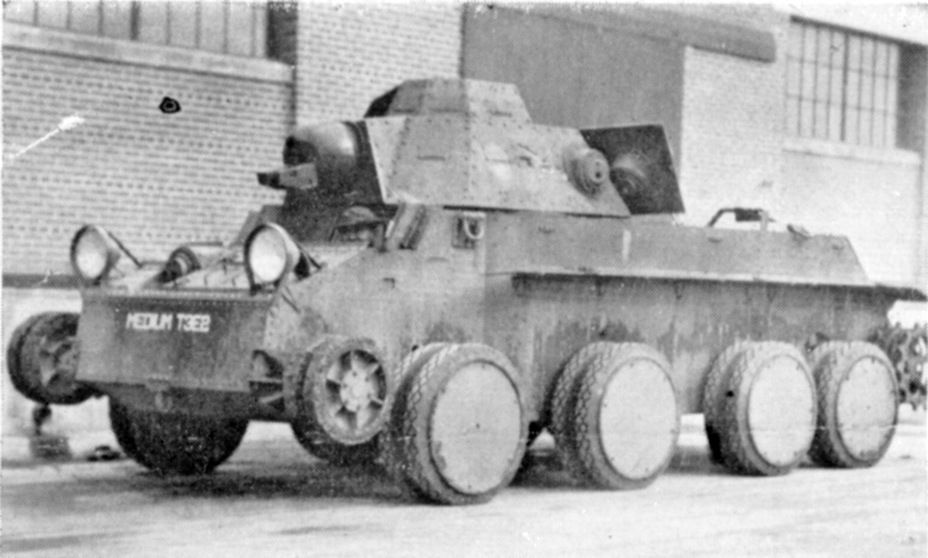 t4 combat car
t4 combat car 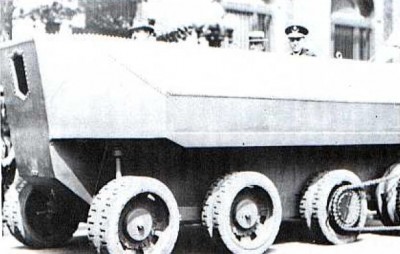 1923
1923 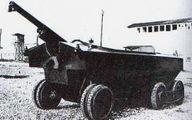 . 1922
. 1922 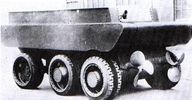 1921
1921  1928
1928 
 . American airborne Christie M1936 tank.
. American airborne Christie M1936 tank. 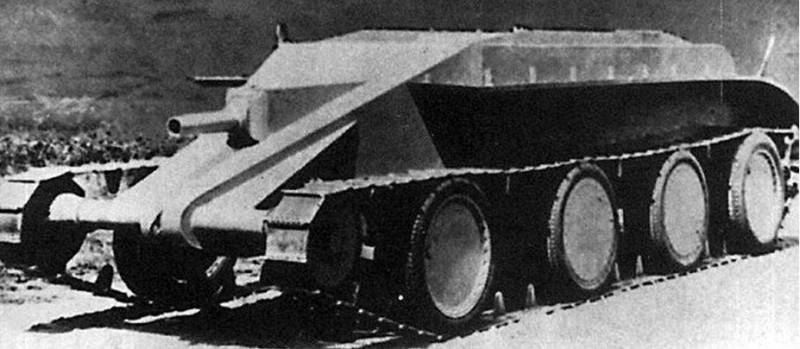

 so many designs so few made question how much of a a****** was Chrsite
so many designs so few made question how much of a a****** was Chrsite/USA/Files/2-MediumTanks/Christie-M1919/Christie-M1919.ch.jpg) |
|/USA/Files/2-MediumTanks/Christie-M1919/M1919Tanks.jpg) |
|/USA/Files/2-MediumTanks/ChristieM1928/ChristieM1928.ch.jpg) |
|/USA/Files/2-MediumTanks/ChristieM1928/M1928-2-Tanks.jpg) |
|/USA/Files/2-MediumTanks/ChristieM1928/M1928-Tanks.jpg)
/USA/Files/2-MediumTanks/Christie-M1931/M1931-01Tanks.jpg) |
|/USA/Files/2-MediumTanks/Christie-M1931/M1931-02Tanks.jpg) |
|/USA/Files/2-MediumTanks/ChristieM1932/ChristieM1932.jpg)
/USA/Files/2-MediumTanks/T3/T3.ch.jpg) |
|/USA/Files/2-MediumTanks/T3/T-3-2.jpg) |
|/USA/Files/2-MediumTanks/T3/T3-2Tanks.jpg) |
|/USA/Files/2-MediumTanks/T3/T3-3Tanks.jpg) |
|/USA/Files/2-MediumTanks/T3/T3.ch2.jpg)
/USA/Files/2-MediumTanks/T3/T1.ch.jpg)
/USA/Files/2-MediumTanks/T3/T3E2.ch.jpg)
/USA/Files/2-MediumTanks/T3/T3E2-2.Tanks.jpg)
/USA/Files/2-MediumTanks/T4/T4-1Tanks.jpg) |
|/USA/Files/2-MediumTanks/T4/T4-2Tanks.jpg) |
|/USA/Files/2-MediumTanks/T4/T4E1-1Tanks.jpg) |
|/USA/Files/2-MediumTanks/T4/T4E2-1Tanks.jpg) |
|














